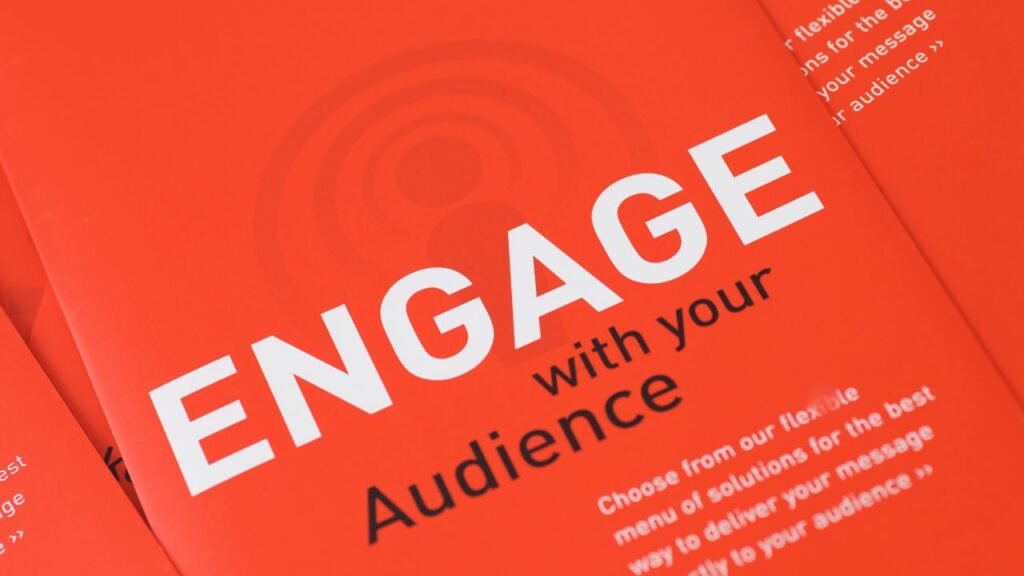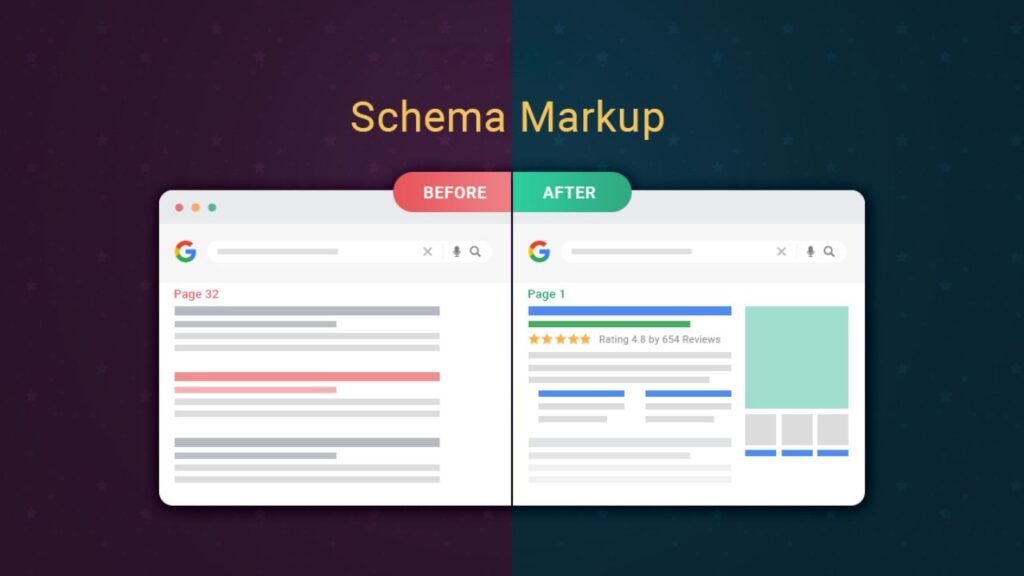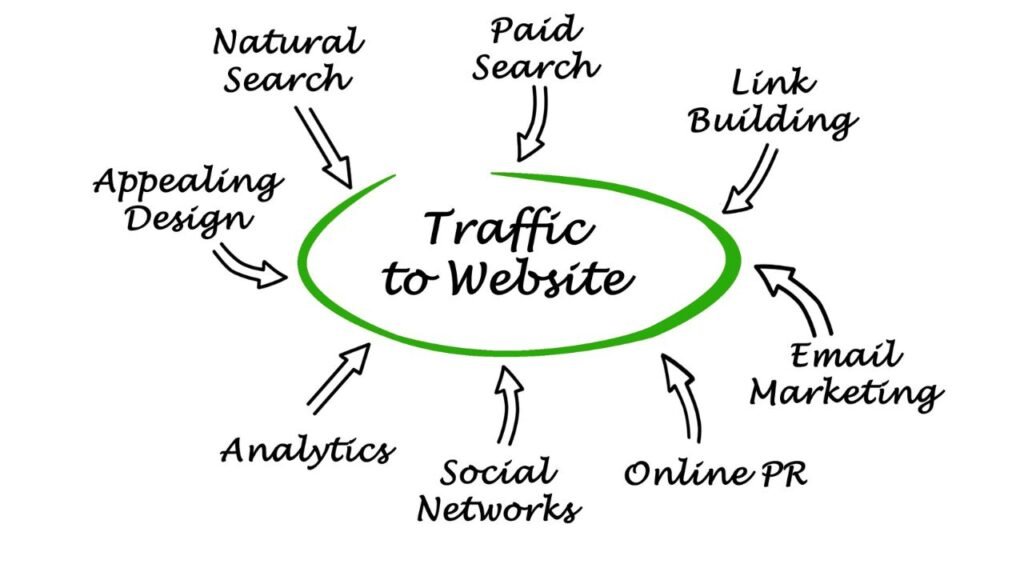Want to drive a load of traffic to your WordPress blog in no time? Whether you are an experienced blogger or just a newcomer, these tips will help you attract more visitors and see them coming again and again. Here is how you can easily upgrade the performance of your blog quickly-in a matter of few easy steps from SEO strategies to content improvements.
Optimize Your Content for SEO

The best way to get organic traffic for your WordPress blog is by optimizing it for search engines. In other words, this means using relevant keywords in your content, proper header tags, and adequate structuring of the content.
Keyword Research and Implementation
You can now start by finding keywords that your target is searching for. Google Keyword Planner, Ahrefs, or SEMrush are excellent tools to find many high-traffic keywords related to your niche. Now, using all these keywords, strategically place them in the title, headings, and use them throughout the content. Never do keyword stuffing because it could highly affect your SEO negatively.
Meta Descriptions and Title Tags
Come up with great meta descriptions and title tags for the post. These ought to include your keywords and should make users click. A well-crafted meta description can boost your CTR sizably.
Header tags and structured data
Use header tags like H1, H2 and H3 to structure your content. The correct use of header tags allows search engines to comprehend not only the organization and ranking of your content, but also its pertinence. Which is enhanced by adding schema markup to your content.
On-page SEO Elements
Each blog post should ensure that the URLs have been optimized, all images have alt text, and these posts are full of internal linking to relevant content. All of these on-page SEO elements help search engines index you better and also make users happy.
Tools and Plugins
If you really want to get into the flexibility, think about using SEO plugins such as Yoast SEO or Rank Math. These tools are equipped with actionable insights and will give you recommendations to fine-tune your content towards better performance in search engines.
Must Read: How to Use SEO to Grow Your WordPress Blog Audience in 2024?
Leverage Social Media Marketing

Social media networks work well for helping to get more traffic to your WordPress site. You can reach an even larger audience once you’ve mastered these channels and drive more engagement.
Which Platforms?
Determine the top social media sites being used by your target audiences. Such as Facebook, Twitter, Instagram, LinkedIn, Pinterest and many others. Create content in the ways that are suited to each specific platform, its nature and how users use it differently.
Creating Shareable Content
Make posts that will engage your audience, and increase their chance of being shared. Infographics, listicles, and tutorials often get more buzz on social media. Even the creativity in headlines and fabulous visuals increases sharing in posts.
Engaging with Followers
Reply to comments, participate in the discussion, and share user-generated content. The community of your blog generates loyalty and calls back for visits.
Social Media Ads
Use social media advertising. Facebook and Instagram offer the possibility of targeted advertising to a specific demographic.
Social Media Performance Tracking
Utilize the analytics tools that each social media site offers to track the performance of every post and advertisement. Based on the engagement metrics, click-through rates, and conversion rates, shape and re-shape your social media strategy.
Engage with Your Audience

Engaging with your audience creates a loyal following and repeat visits. Develop methods that produce community interaction.
Create Spaces for Readers to Comment and Compose Feedback
You should ask readers to comment on your blog posts. Provide them with space to compose their feedback. Respond to comments showing them that their thoughts are important to you. You could activate comment moderation to ensure only positive discourse occurs.
Host Q and A’s, polls
Host Q&A sessions or polls to engage your audience. This interaction can help you understand what types of content interest them, hence the need to personalize your content for them.
Provide Personalization Options
Give the users a feel of personalization by allowing them have an opportunity to select certain types of content they would enjoy or provide personalized email newsletters. Personalization creates a higher probability of user satisfaction and engagement.
Build an Email List
Encourage blog followers to subscribe to your e-mail list and get their hands on fresh content and exclusive material. E-mail can be an excellent way to stay directly connected with the audience and drive traffic to your blog.
Use Comment Plugins
You may also use comment plugins such as Disqus or Livefyre. They are often designed to offer excellent commenting experiences with social media integrations and advanced moderation tools.
Utilize Internal Linking

Internal linking can help improve the structure of your blog and also prompt visitors to look for more content. It also plays a significant role in SEO as it spreads page authority across all of your site.
How to Plan Your Link Strategy?
Develop an internal linking strategy using some essential pages or posts from which you need to link your other internal content. Link to other relevant and related articles to provide more value to your readers.
Using Descriptive Anchor Text
You will want to use descriptive anchor text for your internal links. Descriptive anchor text is words which describe what the page you are linking to contains. Don’t just use “click here” or something similar because this does not give the search engines or users any idea of what they can expect by clicking on the link.
Balancing Links
Spread the internal links throughout your content. Overlinking a particular page is spammy and results in a bad user experience.
Replenish Old Posts with New Links
Review time and again older posts incorporating new links in place of the old content. This will not only be refreshing your content, which should make it remain relevant, but also drive traffic into your newer ones.
Monitoring Link Performance
Monitoring internal link performance using tools like Google Analytics can also be done. Look at metrics, such as click-throughs and bounce rates, for insight into how effective that linking plan is.
Improve Page Load Speed

A fast loading blog entails the following advantages: These blogs help you retain viewers and ensure a better rank in search engines. Slow loads can increase bounce rates and reduce user satisfaction scores.
Optimize Images and Media
Compress and resize images. Tools such as TinyPNG or ImageOptim compress images without losing quality. Add lazy loading of images for more page load time benefits.
Minify CSS and JavaScript
Most of these tools offer minification, which would compress your CSS and JavaScript files in terms of size. That speeds up page loads. UglifyJS, CSSNano among others can help you out here.
Asynchronous Loading of JavaScript Improves Performance
Browser Caching
Browser caching accommodates static resource storage within user devices. This means practically no more re-downloads and page load time for users who had visited the page before.
Use of a Content Delivery Network (CDN)
For instance, a CDN will actually spread out your content so it is reachable from multiple servers all over the globe, reducing latency and increasing load times. Easy-to-deploy solutions are made possible by services like Cloudflare and KeyCDN to help speed up your blog.
Monitoring Performance with Tools
Test your blog’s load speed from time to time with tools like Google PageSpeed Insights or GTmetrix. These tools give actionable recommendations for further optimization.
Create High-Quality Backlinks

Quality backlinks are very much essential in establishing your blog’s authority and increasing the ranking of your blog on search engines. You will need to get the links from relevant and believable sources.
Guest Blogging Opportunities
You are supposed to outreach other bloggers and sites in your niche for guest blogging opportunities. Here you must provide them with valuable content in return for a backlink to your blog. This strategy can also enable you reach new audiences.
Building Relationships with Influencers
You can work with influencers as well as other leaders in your niche and earn some backlinks when they share your content as well as get useful links from their own sites.
Shareable Content
Do ensure that you are creating shareable and likely-to-get-links content. Infographics, research reports, and in-depth guides are content that mostly get links from other websites.
Directory Submission
Link your blog to reliable online directories and resource lists. These directories must be niche-specific and have a high domain authority.
Checking Your Backlink Profile
Use tools such as Ahrefs or Moz to check your backlink profile and remove any toxic or low-quality links that might harm your SEO ranking.
Use Eye-Catching Headlines

Compelling headlines are accountable to catch the readers’ eye and click. Your headlines should be attention-worthy and relevant to your content.
How to Write Click-Worthy Headlines?
Write headlines that make people ponder with a clear benefit. Use numbers, questions, or strong adjectives to make your headlines more interesting and appealing. For example: “10 Proven Strategies to Skyrocket Your Blog Traffic” is much more engaging than “Ways to Increase Traffic.”
How to A/B Test Headlines?
You will discover that some headlines perform better than others. To determine which one is, you can use tools for A/B testing like CoSchedule or Optimizely and test your headlines as well as fine-tune your approach.
Use Power Words
Add some power words to your headlines to incite emotions and eyeballs. The incorporation of “ultimate,” “essential,” and “proven” improves your headlines.
Keeping It Relevant
Your headlines should reflect what’s on your blog post. Misleading headlines may lead to high bounce rates and loss of credibility.
Analyzing Headline Performance
Always monitor your headlines through analytics. Check out the click-through rate, engagement, and other metrics to know whether you can influence the traffic or not.
Incorporate Visual Content

Visual content can make your blog very much appealing and further lift user engagement. Use images, videos, and more as visual media to make posts more engaging.
Using Quality Pictures
Using high-quality pictures that complement what you are saying in your blog while appealing to your target audience is important. Avoid using stock photos since they are so generic and overused. Many times, original photographs and custom graphics work better.
Creating Engaging Videos
Videos can be considered as an engagement booster and experience enricher for your readers. You can make video tutorials based on the topics you might have discussed on your blog, a review of the product, or whatever story behind the scenes you think will interest your readers.
Infographics
Another fantastic form of emphasizing a lot of information in an appealing format Infographics. Infographics can also be used to illustrate data, statistics, or a step-by-step process.
Incorporate other multimedia elements like podcasts or slideshows. You can even include some interactive content to supplement your blog posts. Ensure that the multimedia content loads rapidly on any device or gadget.
Optimizing Images and Videos
Using accessible file names and alt text will make the visual content more optimized. Accessible content means images and videos are understood not only by users with visual impairments but also by search engines.
Optimize for Mobile Devices

Optimizing your blog to be mobile-friendly is one of the factors affecting not only the experience of your users but also the positioning on search engines when internet use increased via mobile devices.
Implementing a Responsive Design
Ensure your blog design is responsive; it will alter with the varying screen sizes or devices. A responsive design is for better usability and consistency in all visits.
Testing Mobile Usability
Test your blog’s mobile usability using the Mobile-Friendly Test tool by Google. Then, take care of all the problems related to mobile usability up to date like font size, button placement, and navigation.
Optimizing Mobile Load Times
Make your mobile blog load more quickly by compressing images, lessening the size of CSS and JavaScript files, and taking advantage of browser caching. Mobile sites that load more quickly translate to higher user satisfaction scores and also fewer bounces.
Ensuring Easy Navigation
Design your mobile blog layout with easy navigation in mind. Use clear and concise menus, large buttons, and touch-friendly elements to enhance the mobile browsing experience.
Monitoring Mobile Analytics
Analyze mobile traffic and engagement metrics using Google Analytics. Identify trends and areas for improvement to continually enhance your mobile blog experience.
Utilize Email Marketing

Email marketing is one of the best ways you can redirect people to your blog and maintain communication with your audience directly. So, apply some effective email marketing strategies that boost engagement and increase conversions.
Building an Email List
Give visitors a reason to subscribe to your email list by offering them benefits that can only be availed through the email like exclusive content, discounts, or free resources, or simply opt-in forms throughout your blog and landing pages to gather the email addresses of your subscribers.
Newsletters to Keep Audiences Engaged
Engaging informative newsletters with the value for your subscribers, keeping them up to date about links to your latest posts, updates, and other interesting stuff.
Segmentation of Email List
Segment your email list based on user interest, behavior, or demographics. That way, you can target the given set with particular content that you might know would resonate with a certain section of your users.
Personalization of Email Campaigns
Make your email campaigns personalized by mentioning subscribers’ names and specific content relevant to the subscriber. Chances are that personally accredited emails will be opened and acted on.
Tracking the Success of Your Email Campaign
Here is how you can keep a track of your email marketing campaign success through some key metrics like open rates, click throughput rates and conversion rate. Monitor the numbers, optimizing your email marketing strategy and then optimising results.
Implement Schema Markup

Schema markup helps the search engines understand what is on your blog, and your posts will appear even more often in the search results. Schema markup can improve the blog’s SEO, bringing more views.
Knowledge About Schema Markup
Schema markup is structured data about telling search engines more about your content. It contributes to enabling search engines to illustrate rich snippets and to make a better display of result listings.
How To Apply Schema Markup To Your Posts?
Make use of schema markup to mark up diverse content types within your blog, including articles, reviews and even events. You could build structured data markup using some tools like Google’s Structured Data Markup Helper and then put the markup on your blog.
Testing Schema Markup
Use Google’s Rich Results Test or Schema Markup Validator to test your schema markup so as to see to it that it is properly marked up. Fix the errors and warnings you get for maximum effectiveness of your markup.
Monitoring Rich Snippets
Monitor your rich snippets performance on Google Search Console. Instead, by using impressions and click-through rates metrics, get a sense of the effect of your schema markup on traffic.
Schema Changes Keep track of any schema markup standard update changes. Periodically review and update your mark-up for such compatibility with modern search engine requirements.
Regularly Update Your Content
Another key to sustaining traffic and higher rankings of the search engines is by keeping your content fresh, relevant, and current. This ensures that your blog remains worthy of reading and also visible to the search engines.
Refreshing Old Posts
Review older blog posts periodically and refresh them. Insert new information, update statistics, and refresh information that is quickly moving out of date. Refreshing old blog entries is an effective way of bettering their relevance and accuracy.
Add new insights, case studies, or examples to your current content. This increases the value to the readers and gives credibility to your blog.
SEO Re-Optimization
This is the second SEO optimization, entering in fresh, new keywords, as well as refining the meta description and the header tags. This will keep you steady in your rankings or help you improve over time.
Encourage fresh content through social media channels, email newsletters, and more. Let people know that the content’s refreshed and to come visit your blog again.
Content Performance Monitoring
Tracking the performance of the content you have updated with analytics tools for traffic, engagement, and conversion metrics to know if your update has really made a difference.
Monitor and Analyze Your Traffic

Keep a close eye on the regular monitoring and analyzing of your blog’s traffic-this will show you how you’re working and, thus, aid in data-driven decisions. Use the analytics tools to understand your audience and optimize your strategy.
Installation of Google Analytics
Install Google Analytics on your blog to track traffic and user behavior along with other key metrics. Configure goals and events for keeping check of your conversions and interactions.
Analyzing Traffic Sources
Examine the origins of your traffic – organic search, social media, or referral sites. Of these channels, which one sends in the most traffic? Concentrate your improvement efforts there.
Tracking User Behavior
Examine the behavior of users on your blog – bounce rate, session duration, and page views. Use this data to determine areas that should be improved to improve user experience on your blog.
Creating Reports and Insights
Generate reports on your blog performance regularly so you could track it over time. In these analyses, identify trends and measure the impact of your strategy to bring yourself closer to making the right decisions.
Chased Data for Adjustments
Through the insights generated through analytics, you need to adjust your strategy concerning content, marketing, and SEO. Fine-tune your process so that you are constantly optimizing traffic and engagement.
Collaborate with Influencers
Actually, co-operation with influencers will bring traffic to your blog. Influencer collaborations may hugely drive traffic to your website, and contacting influential people in your niche helps you reach many people and enhances your credibility.
Relating to Relevant Influencers
Research on influencers who fit your blog’s niche. Choose the influencer who has engaged followers and have pretty strong online presence. Reach out to these influencers
Outreach to Influencers with a Personalized Pitch
With a personalized pitch, describe why you would like to collaborate with them and give them a reason for return value-from which in this case could be within sponsored content, a product review, or exclusive access.
Collaborative Content Creation
Work with the influencers on pieces that highlight your blog and would be useful to their audience. Collaborative content is a form of guest posts, interviews, or co-branded projects.
Using Influencer Reach
Use the influencer’s influence for promotion of your blog in order to get the traffic. Publish jointly prepared content on social media, email newsletters, as well as your blog in order to achieve maximum views.
Measuring the Impact of Influecer Collaborations
Monitor how influencer collaborations perform using metrics such as referral traffic, engagement rates on social media, and conversion rates. Evaluating each and then adjusting the process based on what was learned.
Offer Valuable Lead Magnets
A lead magnet is a type of incentive you provide to visitors in exchange for receiving their contact information. With helpful lead magnets, you can increase your email list and also your traffic on your blog.
Selecting The Right Lead Magnet
The selection of the correct lead magnet shall solely depend on interest and need for your target audience. It can be an eBook, checklist, template, or exclusive access to the content.
How to Create Successful Lead Magnets?
Ensure that your lead magnets deliver real value and look professionally designed. Lead magnets of high quality increase the likelihood of people giving away their contact information.
Promoting Your Lead Magnets
Raise awareness about your lead magnets on your blog, social media channels and in e-mail newsletters. Be sure to include clear calls to action and explain in detail what benefits your lead magnets will bring so that appropriate people can sign up.
Segmentation of Your Email List Based on Lead Magnets
You then segment your email list according to the lead magnets that users opted into. This enables you to send content tailored to their exact interests and preferences.
Lead Magnet Performance Monitoring
Monitor the performance of your lead magnets by monitoring download rates and conversion rates. Refine your lead magnets using this data and enjoy better results.
Optimize Your Blog’s Meta Tags

Meta tags are important components of SEO, as they allow search engines to make sense about your content. Imaginable meta tags would do great in maximizing the post to your blog, making it get more blog visitors.
Crafting the Best Meta Titles
Develop meta titles that are good and enticing. Be sure that your keywords will appear on it, and as factual as possible to the content or the blog post posted.
Writing Good Meta Descriptions
Write meta descriptions summarizing your content and include relevant keywords. A good meta description can enhance click-through rate, thus creating more visitors.
Schema Markup for Meta Tags
Schema markup may also make your meta tags look a little nicer and increase search engine visibility. You can add structured data, which makes more context possible and improve the look of your search listings.
Unique Meta Tags for Each Post
Make sure that every post has unique meta tags for the best SEO results.
Do not allow identical meta tags to exist on multiple posts. If you have many posts, ensure that each has unique meta titles and descriptions so that you don’t get confused and also to make them help in improving SEO .
Meta Tag Performance Monitoring
Track your meta tag performance. Track your metric using tools like Google Search Console. Assess your impressions and click-through rates to determine whether your meta tags are effective.
Host Webinars or Live Streams
Webinars and live streams provide you with chances to participate directly with the target audience, thereby increasing traffic on your blog. It will also help in becoming an authority by virtue of the planned events for the readers.
Preparation and Promotion of Webinars
Plan webinars based on a topic of interest for your audience. Promote it through your blog, social media, and email newsletters. Forms can be submitted by the attendees for gathering information.
Engage with your audience through live streams on YouTube or Facebook. So, you will have meaningful content with Q&A’s to keep them coming back for more.
Use of Recorded Video Content
Record your webinars and live streams and use them as on-demand content for your blog and social media. This way, you can reach a wider audience and add value for those who could not come and enjoy the experience live.
Getting People to Participate
Ask questions, poll the crowd, and request feedback from an audience to encourage participation on webinars and live streams. By creating engagement, you will develop a relationship with the viewers and hold their interest better.
Event Performance Analysis
Monitor your performance in webinars and live streams by measuring such metrics as attendance, engagement, and feedback. With it, you will be able to pinpoint what works and what doesn’t, and how you might improve future events to further attract viewers toward your blog.
Promote User-Generated Content
It can make your blog appear more authentic and get considerable traffic since it is coming from your audience. So, encourage UGC and feature your users’ contributions to build a community, and attract visitors to your blog.
Encourage UGC Submission
Ask your readers to contribute content to you whether it is a review, or even a testimonial, or perhaps even an article/blog post. Clearly outline guidelines and incentives to encourage participation.
Showcasing UGC on Your Blog
Promote user-created content head-and-shoulders above your blog. Build dedicated pages or posts that display community-created content.
Engage the Power of UGC Through Social Media
Publish user-created content within your social networks to leverage greater visibility and contributions. Cite and attribute contributors to establish connections and community.
Interact with contributors by responding to the content they produce, thanking them for contributing, and sharing their content with your audience. Good relations may lead to continued participation.
Monitoring UGC Performance
Keep tabs on how the user-generated content impacts the traffic and engagement of your blog. Referral traffic, social shares, and interactions can provide a result for your UGC strategy.
Create Compelling CTAs
Use effective calls-to-action to bring your readers towards the actions you want. Attractive CTAs can also drive traffic to your blog. Write attractive and conversion-driven CTAs .
Attractively Designing Your CTAs
Design CTAs that are impressive and instantly noticeable. Use contrasting colors, bold texts and clear messages to help bring your target audience your CTAs successfully.
Using Actionable Words
Use action words in your CTAs, encouraging visitors to take the next step. Some examples include “Download Now,” “Subscribe Today,” or “Learn More.” These may stimulate clicks and conversions.
Location of CTAs
Position your CTAs near relevant content in strategic places on the blog, including at the bottom of posts, in sidebars, or even within the content. Ensure that your CTAs are accessible and relevant to the content of the page.
Testing CTA Effectiveness
Also test different CTA designs, copy or placements to see what works the best with your audience. A/B test variations of each other to determine what may perform best.
Measure CTA Performance
Analytics tools are necessary for measuring CTA effectiveness, starting from click-through rate and conversion rates, to some measure of user interaction regarding the effect of your CTAs on both traffic and engagement.
Leverage Google My Business

Google My Business (GMB) will boost your blog into getting a better ranking in the local SEO aspect. Let’s make use of GMB and gather the maximum number of visitors and try to push your online presence with your blog.
Creating and Verifying Your GMB Profile
Create and verify your Google My Business profile to manage your blog information on Google. Make sure your profile is complete and accurate and must contain your blog’s name, address, phone number, and website URL.
Optimization in Your GMB Listing
Optimize your GMB listing by adding relevant categories, business hours, and high-quality images. Keep updating your listing with new content and promotions regularly to keep the information current.
Encourage Reviews
Ask satisfied readers to give reviews and encourage them to leave feedback on your GMB listing. Positive reviews help improve the credibility of your blog and attracts more visitors.
Monitoring GMB Insights
Use GMB Insights and metrics such as the number of people searching for your listing, user actions on your listing, and the sources of traffic to analyze the performance of your listing. Revise your local SEO strategy based on those data.
Promote Your GMB Listing
Distribute your GMB listing on your blog, social media, and more ways. Ask readers to visit your GMB profile page and leave reviews as a way of expanding your blog’s coverage and respect.
Must Read: How to Create a Viral Post on Your WordPress Blog?
FAQs
How do I enhance my performance of a WordPress blog search engine optimization?
Optimize your content with the right keywords, proper header tags, and schema markup. Create high-quality backlinks and also improve the page load speed maintaining the aspect of mobile-friendliness as well.
How can I optimize the traffic on social media to my blog?
Social media marketing is really effective if the choices of platforms are optimal, if the content posted is shareable, and if followers are engaged enough. Running ads on social media along with tracking the performance works wonders.
How to connect with your blog audience?
Create comment and feedback opportunities, invite Q&A sessions, offer personalization, compile an email list, and comment plugins all work to stimulate interaction.
What are lead magnets and how can they increase blog traffic?
A lead magnet is an incentive you can give visitors in exchange for some contact details. Lead magnets help grow your email list and drive traffic by providing highly valuable information or resources.
How do I measure if my blog contents are successful?
Track performance metrics such as traffic, engagement, and conversion using analytics tools. Regularly review and adjust based on insights from these tools.



